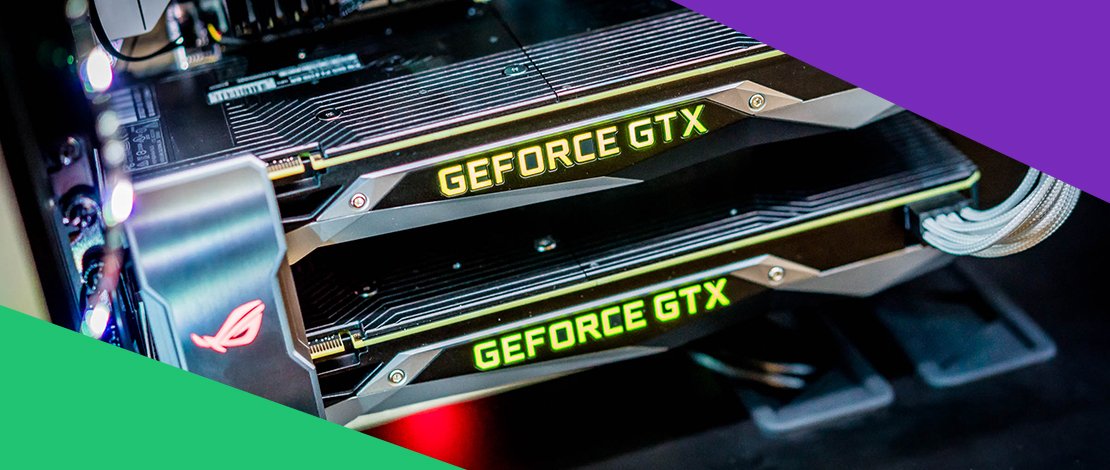Crossfire vs SLI. Which Is Better? The Correct Answer Is None!

If you are a gamer that wants to maximize potential FPS or wants to game at super high 8K resolutions, you have probably looked into multi-GPU technologies as a solution to your troubles.
The entire topic revolves around SLI and Crossfire implementations of multi-GPU technologies so which one should you go with? Well, the short answer is none of them, since both technologies have been phased out and are obsolete.
Let us quickly explain why buying a single beefy GPU is the best decision currently.
SLI vs Crossfire – Obsolete Terms
The first main reason you should not invest or even research the Crossfire vs SLI topic further is that both terms and technologies associated with them are obsolete and no longer supported.
NVIDIA
SLI was the term used by NVIDIA to describe their multi-GPU technology until the release of the RTX cards. SLI required for the user to put together identical cards with the use of an SLI bridge connector and use special SLI certified motherboards that would be compatible with the technology.
The overall process was costly and very limited due to the requirements implemented by NVIDIA. An SLI setup was only feasible in a situation when you were not concerned about cost-effective parts and just wanted the best of the best.
SLI was superseded by NVLink, the new inter-GPU communication protocol that was developed for the RTX cards and offered higher bandwidth and was overall a better multi-GPU technology.
NVLink worked with RTX 2070 Super cards or better.
The reason we are using the past tense for somewhat new technology is that NVIDIA has already dropped support for multi-GPU usage for the RTX 3000 series cards. The only exception to this is the RTX 3090, which is a Titan equivalent and should not even be considered a gaming GPU.
AMD
On the AMD side, Crossfire was a pretty interesting multi-GPU technology that was a lot laxer with its requirements and could use different GPUs that used the same architecture. The cards also did not need a special connection as they would communicate through the PCIe slots on the motherboard.
This was done through special hardware technology called XDMA that created a direct channel between the two AMD GPUs. An even more interesting development was the fact that Crossfire could also use APUs (integrated GPUs) through Hybrid Crossfire.
Because of the overall freedom in the setup process of Crossfire, it was a lot simpler and cheaper to get a Crossfire setup ready compared to an SLI/NVLink setup.
At the same time just like with SLI, the term Crossfire has been retired in 2017 and replaced with mGPU. Crossfire support has not stopped though, continuing to provide profiles for DX11 applications while mGPU is focused on DX12.
mGPU technologies though are only available if the game devs choose to implement it and support it which is another way of saying that Crossfire is obsolete and mGPU is on its last breath.
AMD Crossfire vs SLI – The Decline of Multi-GPU Technologies
As mentioned above all of the multi-GPU technologies are slowly losing their popularity, with manufacturers dropping hardware compatibility and developers not optimizing games and applications for multiple GPUs.
What is the reason for the slow death of SLI/NVLink and Crossfire/mGPU tech? The main reason is that currently, a powerful single GPU like a 3000 Nvidia card or a 6000 AMD card can perform extremely well in 99% of the usage scenarios.
Multiple GPUs also do not scale in a linear fashion, which means 2 GPUs do not mean twice the performance, and with how powerful single GPUs have become, the tiny bit of gain for a whole other graphics card in your PC is negligible.
AMD has left it up to game developers to implement their multi GPU tech, and we all know how eager developers are to complicate their lives, and NVIDIA just left the technology alive only in their Titan equivalent card – the RTX 3090.
In short, multi-GPU tech is dead for gaming. The only time you should be interested in this topic is if you want to beat all scores in a benchmark, are doing AI learning, or are doing very complex simulations which would make use of all 48GB of VRAM from the 3090.
RIP Crossfire and SLI.